The Golden State Killer Forensic Sketches Test: Could Facial Recognition Have Caught the Killer?
23/9/20, 6:10 am
The Crimes
Between 1973 and 1976, a ‘Peeping Tom’ was on the prowl in Visalia, California. Entering the sanctuary of family homes, the so-called Visalia Ransacker would rummage through personal belongings, moving and hiding items in different locations around the home, causing distress for the occupants. During these years, the Visalia Ransacker ransacked an estimated 125 homes, murdered one person and attempted to murder another.
From June 1976 until July 1979, the East Area Rapist was on the prowl in the eastern part of Sacramento County. Middle class, Northern California suburbs were no longer safe. The East Area Rapist was prolific, violent and brazen. He committed 50 sexual assaults, two murders and one attempted murder.
The Original Night Stalker began his crime spree in Southern California from October 1979 and ended in May 1986. During this prolonged period, 10 extremely violent murders were committed. The Original Night Stalker often crept up on his victims as they slept – murdering lonesome women, and later couples, in the safety of their homes.
In 2001, DNA evidence connected the Original Night Stalker and East Area Rapist crimes. These horrific crimes were perpetrated by the same man. Police investigators also attributed the Visalia Ransacker crimes to the same perpetrator, because of a distinctive pattern and developing modus operandi. They gave a moniker to the perpetrator, encapsulating all these crimes and time periods – the Golden State Killer.
Source: ContentGeek - Timeline of the Golden State Killer's Crimes
Catching the Killer
Over four decades, Californian detectives, crime sleuths and journalists, searched for clues to unlock the killer's identity. The race was on to find the killer before he passed away. Californian detectives had always believed that the Golden State Killer would be ex-law enforcement or military due to his ability to avoid detection throughout his crime spree.
In 2018, they found the key to unlocking the crimes. Californian investigators were able to locate the Golden State Killer through an open source genealogy website. Months of legwork and genealogical tracing finally found a match for crime scene DNA samples. The match led investigators to a 72-year-old Sacramento retiree, Joseph DeAngelo Jr.
On Friday, 21 August 2020, former police officer Joseph DeAngelo Jr., was sentenced to consecutive life sentences after pleading guilty to all the crimes perpetrated under the moniker of the Golden State Killer.
The Forensic Sketches
Over the course of DeAngelo’s criminal history, key evidence available to police investigators were eyewitness accounts. These accounts led to the creation of forensic sketches, often made shortly after the crime.
Forensic sketches (created using hand drawing techniques) can vary in quality. They are extremely difficult to evaluate - the reference point relying on human memory, the witness’ ability to describe a suspect accurately and the artist’s interpretation of this information through a sketch. Each forensic artist’s skill and experience can also differ.
Throughout the criminal career of the Golden State Killer, 11 different sketches of the suspect were created. Over two decades, the hand-drawn sketches and two composite drawings (fashioned from a police catalogue of facial features) differed from each other. Some sketches depicted a thin man with a long face, while others portrayed a young, pudgy ("baby-faced") male. Over time, DeAngelo’s physical appearance fluctuated between significant weight gain and loss.
We now understand why the sketches confused investigators and the public. The sketches suggested that more than one assailant was responsible for the crimes committed across California.
The Hypothesis
In 2018 after the arrest of DeAngelo, I decided to put the sketches to test. My hypothesis was:
Police investigators suspected that the East Area Rapist was a police officer. If they had facial recognition technology back in the 1970’s and 1980’s, would DeAngelo surface as a potential suspect? Would he appear in the top 50 candidates for at least half of the run tests?
The Test
I tested the 11 verified sketches and composite drawings of the East Area Rapist and Original Night Stalker against a reference database. This tests sketches against a database of 1,400 individuals (coloured, standardised ID photographs from the Color FERET Database) and seven photographs of DeAngelo from different eras in his life. The facial recognition algorithm used to complete the testing was NEC’s NeoFace algorithm.
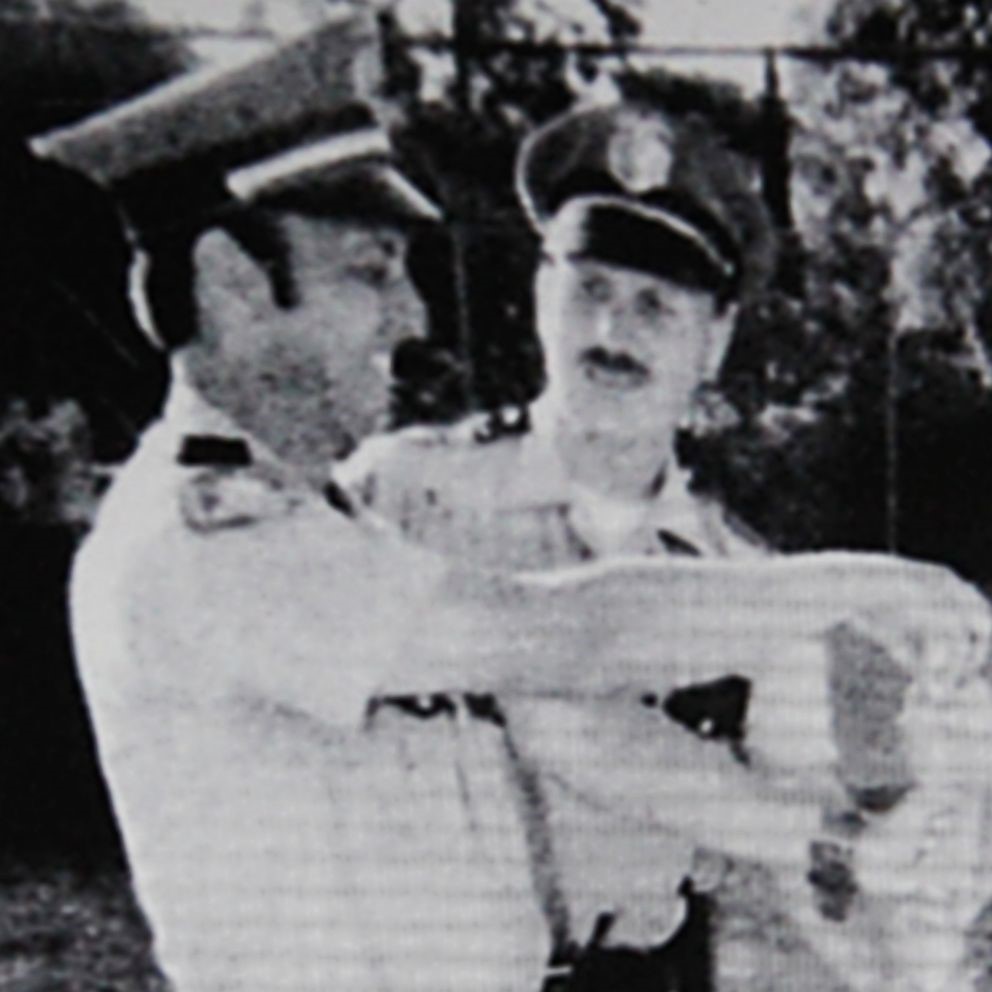
Source: ABC News, DeAngelo Jr. during his employment at Auburn PD
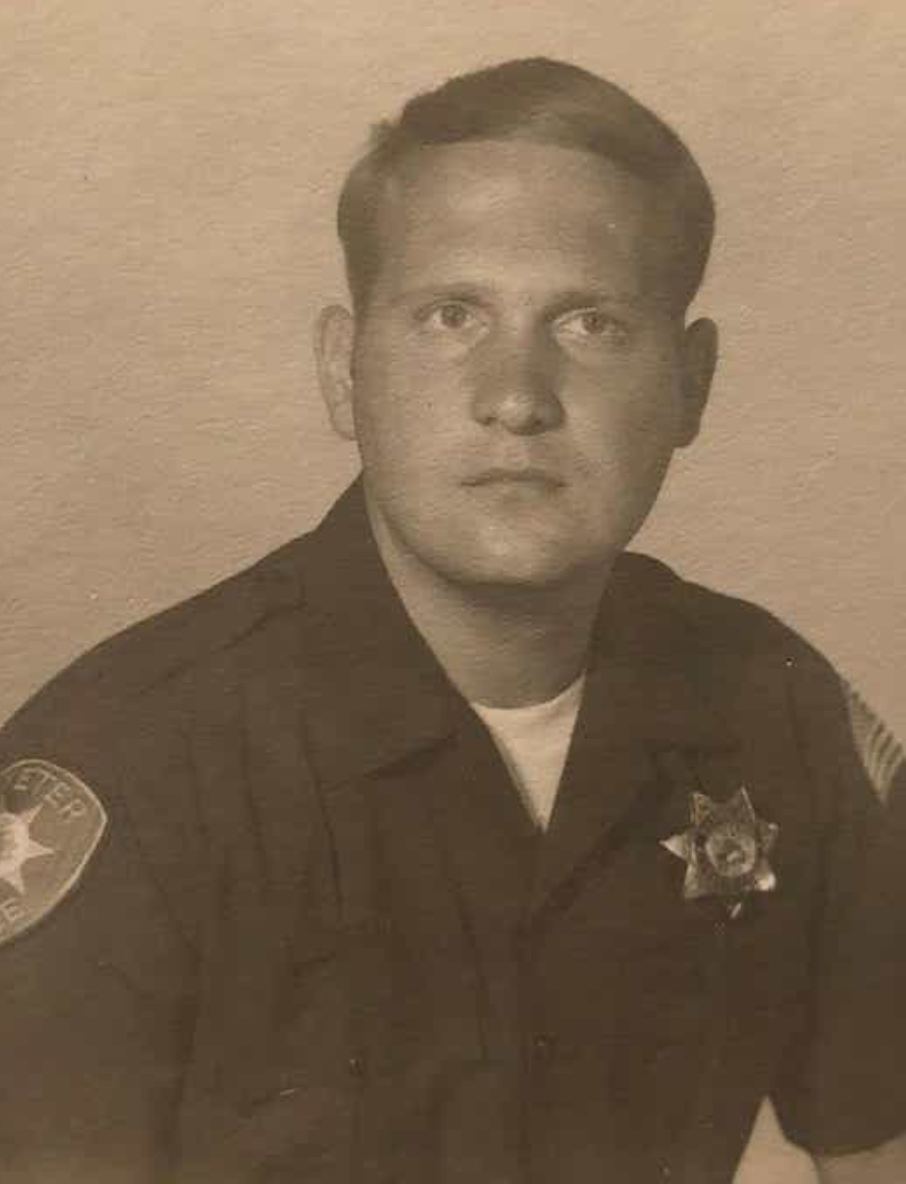
Source: VC Star, DeAngelo Jr. during his employment at Exeter PD
These two photographs of DeAngelo are the most important out of the seven in the reference database. They depict DeAngelo at different times of his police career at Auburn PD (1976 – July 1979). In Image A, DeAngelo is the male on the right with a moustache.
The Results
With human verification of the results, the algorithm was able to narrow down the list of suspects. DeAngelo appeared in the top 50 candidates for 8 of 11 total sketch tests, proving the hypothesis.
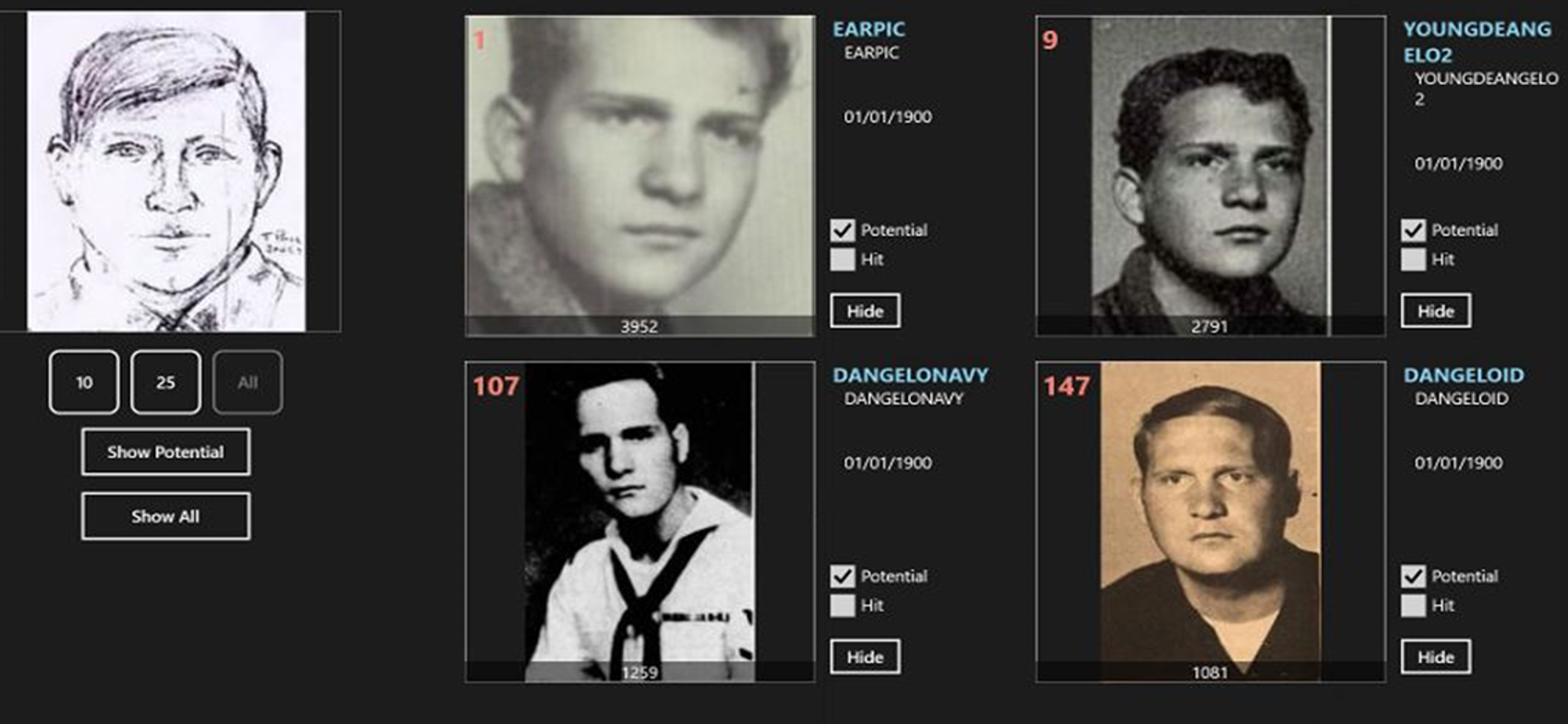
Stand Out Results: Test #1, Visalia Ransacker, Sketch Created Date: 1975
Analysis & Context: The sketch first appeared in a newspaper in 1975 (artists unknown). Officer Bill McGowen, shot by the suspect, provided the description to police. DeAngelo would have been 30 years old and working for the Exeter PD at the time. His weight gain during this period (1973-1975) corresponds well with the photographs of a younger DeAngelo, in candidate positions 1 and 9. Note that police investigators would not have had photographs of their employees as adolescents. The photographs of a younger DeAngelo were utilised in this test case because other photos were not made available.
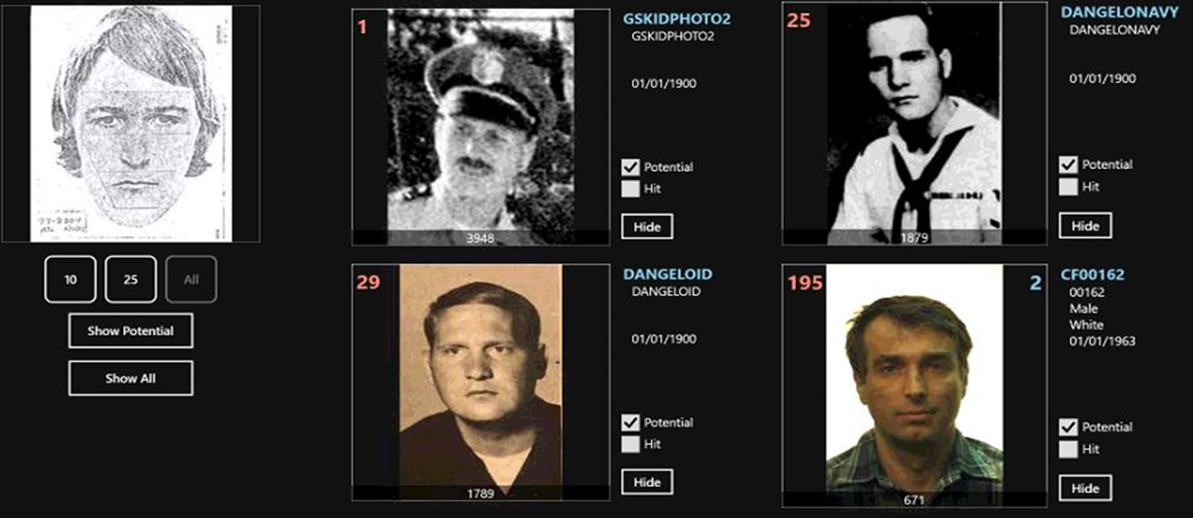
Stand Out Results: Test #4, ‘Rippon Court Shooter’, Composite Creation Date: February 1977
Analysis & Context: Rodney Miller chased a prowler out of his backyard and was shot when trying to jump over his back fence. The composite suspect description comes from Rodney Miller who came face-to-face with the prowler.
DeAngelo had been recently transferred to Auburn PD and his photo from that time appears as the number #1 candidate (photograph capture, 1977). DeAngelo would have been 32 years old at the time of the offence. Other relevant photographs of DeAngelo appear in candidate positions 25 and 29. DeAngelo appears in the top 7% of matches.
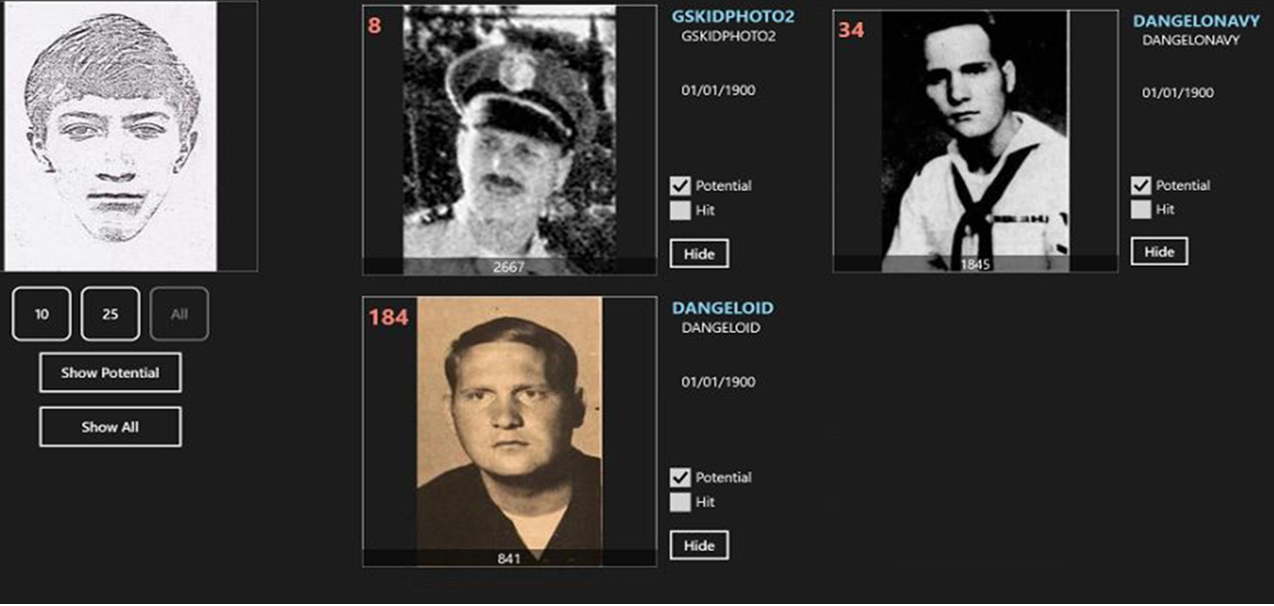
Stand out results: Test #5, ‘Point Ruses Way’, Composite Creation Date: October 1977
Analysis & Context: Composite associated with victim #24 of the East Area Rapist in La Riviera. A neighbour saw the suspect leaving the area after the attack. DeAngelo appears as candidate 8, 34 and 184. This result is again significant. DeAngelo was working at Auburn PD at the time of the crime, corresponding to the photo that appears in candidate position 8, photo taken in 1977.
Notes to Consider
Sketches do not contain as much rich information on facial attributes and structure as photographs do. They contain the basic spatial topology of a face, but are often missing information such as ethnicity, skin colour, skin texture, hair colour or eye colour. Therefore, it would be incorrect to assume that a sketch could be utilised to pinpoint and correlate a definitive identification. Rather, sketches matched against a potential pool of well selected candidates can give investigators an indication about whose basic spatial topology matches a created sketch. The underlying assumption is that the sketch is an accurate portrayal of a person of interest.
As sketches only include basic spatial topological information, the similarity score of the NeoFace algorithm only returns a very low rating (matching attributes out of a 10,000-point calculation between a sketch and a photograph). With these tests, the candidate number placement within the reference database results is more important than the similarity score itself.
Real Cases and Powerful Applications
This was not a lab test. Testing real life scenarios is difficult and far from ideal. If we had a sample of historical California police ID photographs to use within the reference database, the test results would have been more significant.
This test also utilised highly controlled, standardised photographs alongside non-standardised photographs (the second point of contention). However, in real-life scenarios, a case study/test will most likely be comprised of miss-matched photographic standards to some degree.
The NEC NeoFace algorithm is a commercial facial recognition algorithm not created for sketch to photo matching. Computer and data scientists often create algorithms specifically for this type of use case. Other researchers believe that commercial facial recognition algorithms cannot be utilised for sketch to photograph matching. This test counters that argument and assumption.
The rate of development within facial recognition algorithms, thanks to machine learning, is exceedingly fast paced. Our understanding of different algorithms and their potential applications is still being discovered. This is part of the magic of machine learning and the NeoFace algorithm.
The NEC Solution utilised for this test case was NEC’s NeoFace Reveal

Sylvia Jastkowiak
Senior Consultant, Privacy & Security
sylvia.jastkowiak@nec.com.au
